You have no items in your shopping cart.
F.A.Q.
About Cables On Sale
Payment - Credit Cards
Shipping
Product Information
Display Mount Buyers Guide
About Cables On Sale
|
Question: What are advantages to ordering from Cables on Sale compared to placing an order with Monoprice |
|
Answer: There are several advantages to ordering from Cables On Sale. Below are some things to keep in mind when comparing the price at Monoprice with Cables On Sale 1. All products ordered from Cables On Sale are shipped from within Canada; this means that you will not get a nasty surprise in the form of various fees like taxes, customs processing fees and duties beyond what you pay when you place the order. Shipping from Monoprice (and other US - international based retailers) does not include Canadian taxes, duties and the $15 customs processing fee. If you order from a US retailer, be ready to pay the delivery person anywhere from $25-$50, in addition to what you've already paid for the goods. What looks like a better deal can quickly end up costing double once these other fees are factored in. Read Monoprice DISCLAIMER for International Orders
Duties and Taxes : Import duties, taxes, and brokerage fees are not included in the product price or shipping and handling cost and it will be collected upon delivery from the carriers for certain packages. These charges are recipient's responsibility as we are only charging the transportation fee for the packages. You may check with your country's customs office to determine what these additional costs will be.
2. Cables On Sale uses Expedited Shipping - which means that you will get next day delivery in most Ontario and Quebec urban areas and up to 4 days out East and out West. All shippments are insured and shipped with a tracking ID. Comparable service from Monoprice in the form of UPS Worldwide Express / Worldwide Expedited can cost in excess of $25, just for shipping (not including the fees mentioned above). 3. Orders from Monoprice and other US retailers are billed in US Dollars. With the Canadian dollar at par, this may seem like a simple conversion, but many people do not understand that their credit card company will still charge for currency conversion. Expect to pay 2%-5% of the price for the currency conversion. So even with the Canadian Dollar at par, your $100 USD order will end up costing you $105 CAD or more. All orders from Cables On Sale are in Canadian Dollars. 4. Returns and Exchanges - If you have ever had to process a cross border exchange or return, you will know how much hassle this can be. First, you will be charged the customs and duties on import; then when returning or exchanging the item, you may have to apply for the refund on the initial order or pay for the fees for the return shippment. Finally when you get your replacement, you will get charged the duties again. Although it's possible to get the fees back, it's frankly not worth trying to fight the red tape for a few dollars and it may be just simpler to bite the bullet and pay the fees twice (or three times). With orders from Cables On Sale, since all items are shipped from within Canada, you do not have to worry about cross-border shipping. |
|
Question: Do you take custom orders for Monoprice products? |
|
Answer: Yes we do. Please contact us regarding your custom order and we will provide a quote and an ETA. |
Payment - Credit Cards
|
Question: I don't have a PayPal account, can I still order? |
|
Answer: Absolutely. You can pay via PayPal using your credit card even if you do not have a PayPal account. Once you are redirected to PayPal from Cables On Sale, click on the "Don't have a PayPal account?" option and proceed with entering your Credit Card information.
|
Shipping
|
Question: How can I get a shipping estimate? |
|
Answer: You can get a shipping estimate by clicking on the cart (top Right > Shopping Cart > View Cart) after you have added the items you are looking to purchase; then populating ESTIMATE SHIPPING AND TAX section with your postal Code. In general, depending on weight, the shipping costs range from $7.00 within the GTA to approximately $20 in remote areas in BC and Atlantic provinces. |
|
Question: How much time does it take for local pickup to be available? |
|
Answer: Please see date notice when checking out. After placing the order, please wait for an email confirming when is the order going to be available. Also check your email's spam/junk mail folder. Some spam filters may block this kind of emails. Orders are usually available Tuesdays and Thursdays. Please note, orders placed on a weekend or holiday will not be available for pickup until the next business day at 5PM. |
|
Question: Heavy Orders (more than 30Kg) |
|
Answer: Canada Post does not accept shippments heavier than 30Kg and for these you may received more than one box. |
Product Information
Use Ctrl+f to search a term
|
Question: What's the difference between Cat 5, Cat 5e and Cat 6? Can I use one in place of another? |
|
Answer: The difference is in the bandwith ratings. Cat 5e has a higher bandwidth than Cat 5. Cat 6 has a higher rating than Cat 5e. They all use RJ45 connectors and are usually interchangeable depending on the bandwidth requirements of your devices. |
|
Question: What's the difference between UTP and STP? Are these cables shielded? |
|
Answer: UTP stands for Unshielded Twisted Pairs. STP stands for Shielded Twisted Pairs. The ethernet standard uses data packet transmission and error correction. Unlike streaming data transmission, this standard simply buffers and repeats until it has a complete instruction set which compensates data transmission errors. Since UTP was cheaper in the beginning, it generally became the standard. If you are using the cables for ethernet connections, either should work. If you are using for a stream data system like video tranmission, the shielded should be used. |
|
Question: Can I use a cable to connect my device to a router or switch? Can I use this cable to connect two computers (or game consoles) together? |
|
Answer: For connecting devices to a router or switch, use the standard straight cables. For connecting devices directly to each other, use a "Crossover" cable. |
|
Question: Are Monoprice network cables solid or stranded? |
|
Answer: We carry both, the type is usually indicated in the name of the cable, but if it's not stated, cables are always solid. |
|
Question: Are Monoprice Ethernent cables Power over Ethernet (POE) and Voice Over IP (VOIP) compliant. |
|
Answer: Yes, our network cables are made to the highest standards and will support all current and emerging new technologies. |
|
Question: Are Monoprice cables rated for in-wall, risers, plenum? |
|
Answer: We carry various cable types. The name will indicated whether a cable is Plenum, CMR or in-wall rated. |
|
Question: What is Plenum? Do I need it? |
|
Answer: Plenum refers to the plenum crawl spaces found above the ceilings of commercial office building. Unless your installation is in a commercial office space, you do not need plenum. Residential applications usually do not require Plenum. Plenum cables are designed not to produce toxic gases when they are burned. The logic behind this is that in an office building, if a fire broke out in one part of a building, people in other parts of the building may not be aware of the danger but toxic gases being circulated by the air circulation system could knock these people out. |
|
Question: Can Cat6 and Cat6a cables be mixed/ used together? |
|
Answer: Yes, it's fine to mix Cat6 and Cat6a, but you will only get Cat6 speeds. |
|
Question: A cable is listed as being "bare copper", does that mean it has no cable jacket or insulation? |
|
Answer: The "bare copper" refers to the construction of the conductors, as specified in the following reference: Section 5.3 of TIA-568-C.2 requires compliance with ANSI/ICEA SS-90-661-2006 and ANSI/ICEA S-102-732, which both include the following: "Solid conductors shall consist of commercially pure, annealed, bare copper ..." http://www.cablinginstall.com/index/display/article-display/4838983421/articles/cabling-installation-maintenance/news/network-cable/cat6/2011/3/CCCA-CDA-warn-against-copper-clad-aluminum-cables.html The problem is that some manufacturer's cut costs by using Copper Clad Aluminum wire for their conductors. The aluminum has a higher resistance, which causes more heat and can thereby present a fire hazard. "Bare copper" is the term used in the National Electrical Code, Underwriters Laboratories, and the Communications Cable and Connectivity Association (CCCA). Our use of the term is intended to communicate our total compliance with their standards for Ethernet cable construction. |
Display Mount Buyers Guide
![]() Introduction
Introduction
Monoprice offers an extensive line of high quality LCD, plasma, and LED display mounts suitable for just about any application. With all of the choices available on the site the selection can be overwhelming and we understand that choosing the right mount might be intimidating for our customers. Over the years Monoprice has proven to be dedicated to our loyal customer's total satisfaction. This buyer's guide is intended to provide information and technical specifications to help our valued customers make an informed decision in order to purchase a mount that they will enjoy thoroughly and be completely satisfied with.
![]() VESA compliance, weight, and mount compatibility:
VESA compliance, weight, and mount compatibility:
The first steps in selecting a mount are to determine the "VESA mounting pattern" and the weight of your display. Supported screen sizes in descriptions are provided as a guide. Not all models of televisions will fall within guidelines. We judge compatibility with our mounts by the weight and the VESA of the TV, and check with those supported by our mounts capabilities, as listed in the specifications tab of the mount. The VESA mounting pattern refers to the distance between the mounting holes on the back of your display.
These dimensions are not always equal throughout a specific size of television. It can be found in the manual, on the manufacturer’s site, or by measuring the mounting holes on the TV. If you don't have the manual available or the manual doesn't list the VESA specifications, the best method is to use a tape measure to determine the distance between the mounting holes; horizontally (left to right), and vertically (top to bottom). The VESA pattern is defined in millimeters; the most common mounting patterns are as follows:
- VESA 50: 2"
- VESA 75: 3"
- VESA 100: 4"
- VESA 200: 8"
- VESA 400: 16"
- VESA 800: 32"
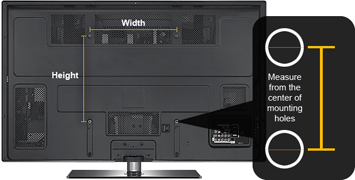
Example: If you're measured the distance between the mounting holes and they are approximately 16" apart horizontally and approximately 8" apart vertically, that would equate to a VESA 400x200 mounting pattern. Under the specifications tab on the product page of our mounts the maximum supported VESA pattern and maximum weight capacity are listed. If you’re mounting pattern is lower than the maximum supported range and the weight is less than the maximum capacity, in most cases your display is compatible.
Example: Under the specifications tab on the product page of product ID 8588 and 8587 it states "Will fit most large flat panel plasma and LCD TVs with mounting patterns up to VESA 750x450." The first measurement refers to the distance between the holes horizontally; the second measurement refers to the vertical distance between the holes. If you've measured the mounting holes on the back of your display and they are less than 750mm (29.5") apart horizontally and less than 450mm (17.7") apart vertically, your VESA mounting pattern is compatible. It also states "maximum weight capacity: 175lbs". If your display is less than 175lbs, it's compatible.
Most Samsung, Sony, and Vizio displays use standard VESA 200x200, 300x300, or 400x400 mounting patterns and are generally light weight which makes them compatible with most of our mounts. However, even if you're confident that the mount you've chosen will fit your display, we always highly recommend confirming the mounting pattern and weight in order to avoid purchasing a mount that's not compatible.
![]() Types of mounts and applications:
Types of mounts and applications:
The second step in selecting the proper mount is to determine what features are necessary for your specific application. The following is a list of the different types of mounts that we carry, their basic features, and the type of applications that they are recommended for.
• Low profile
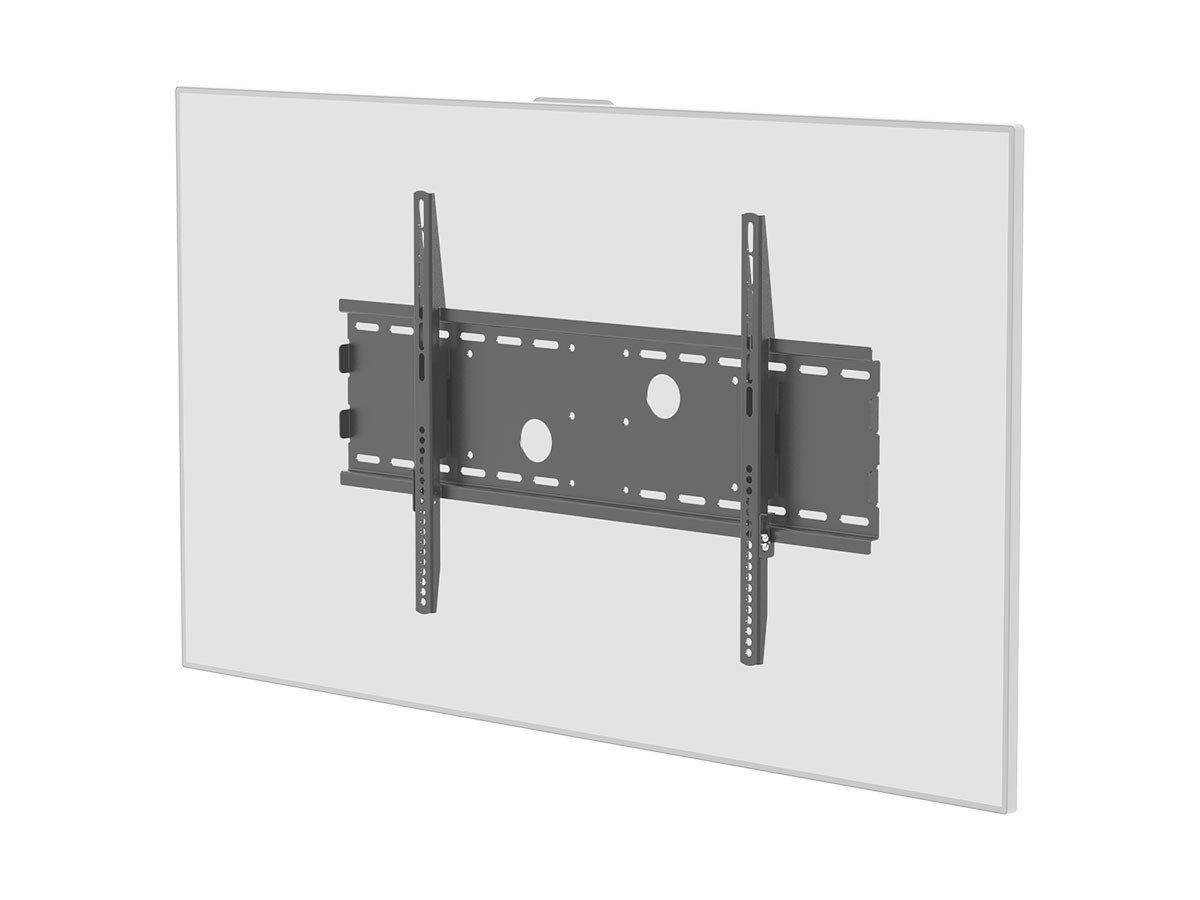
Low profile mounts will cause the display to sit close to the wall and do not offer tilting or swiveling features. Once mounted, the display will rest in a fixed position and the angle of the display can't be adjusted. Low profile mounts are perfect for applications where the display needs to be mounted close to the wall for a visually appealing installation and the display will be mounted at an optimum viewing height and angle where adjustment isn't necessary.
Note: Certain Panasonic plasma televisions and other displays from various manufacturers have a protrusion (bump) on the back of the display that will prevent the display from seating properly when using a low profile mount. When choosing a low profile mount, please ensure that the back of your display is flat and does not have any protrusions that will prevent it from seating properly on the mount.
• Tilting
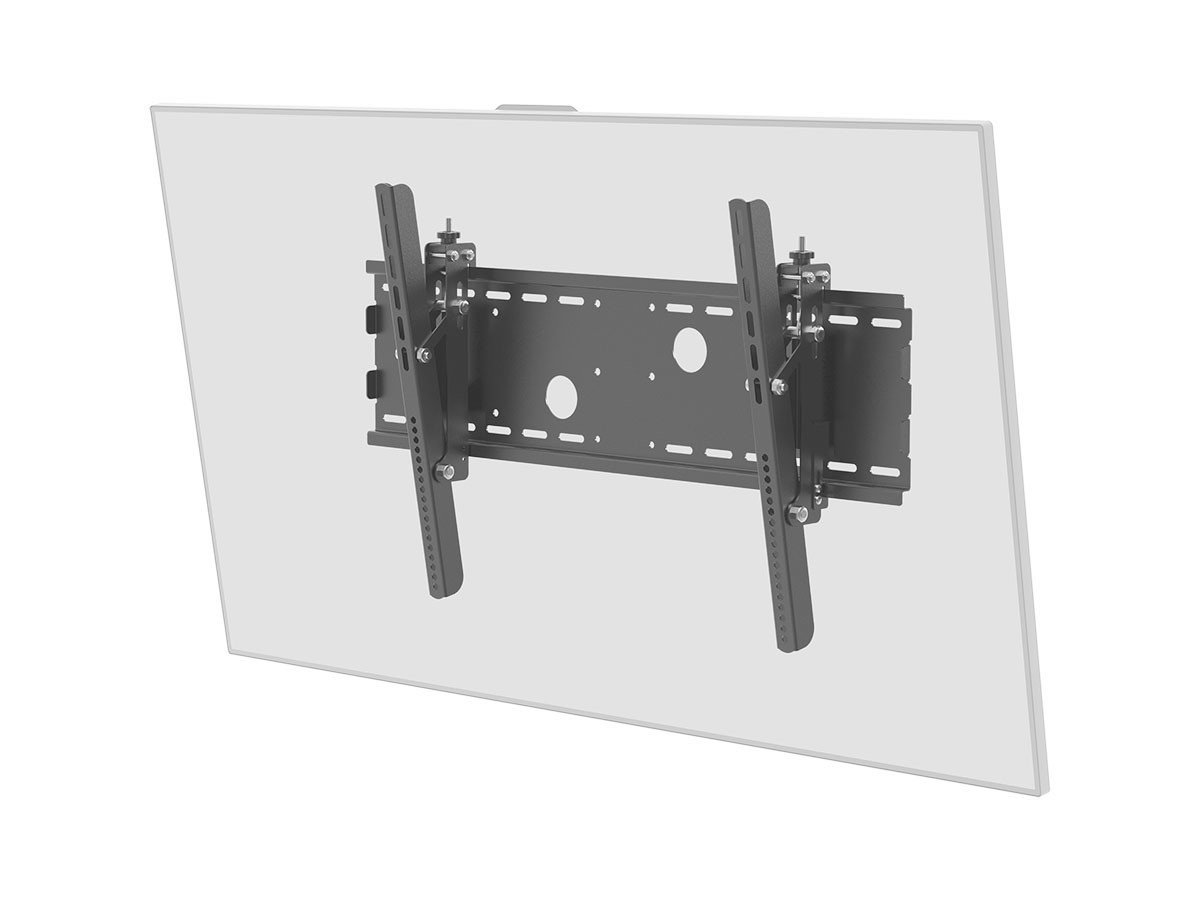
Tilting mounts will cause the display to sit a little farther away from the wall than a low profile model. Once mounted, the viewing angle of the display can be adjusted by tilting the monitor forward. Tilting mounts are great for applications where the television is mounted higher up on the wall and needs to be tilted forward to achieve an optimum viewing angle.
Example: Product ID 3900 is a mount that offers up to 15 degrees forward tilt, supports VESA mounting patterns up to 750x450, the maximum weight capacity is 165lbs, and when mounted the display will sit 4" away from the wall (when parallel to the wall). Go to product
• Tilting and Swiveling
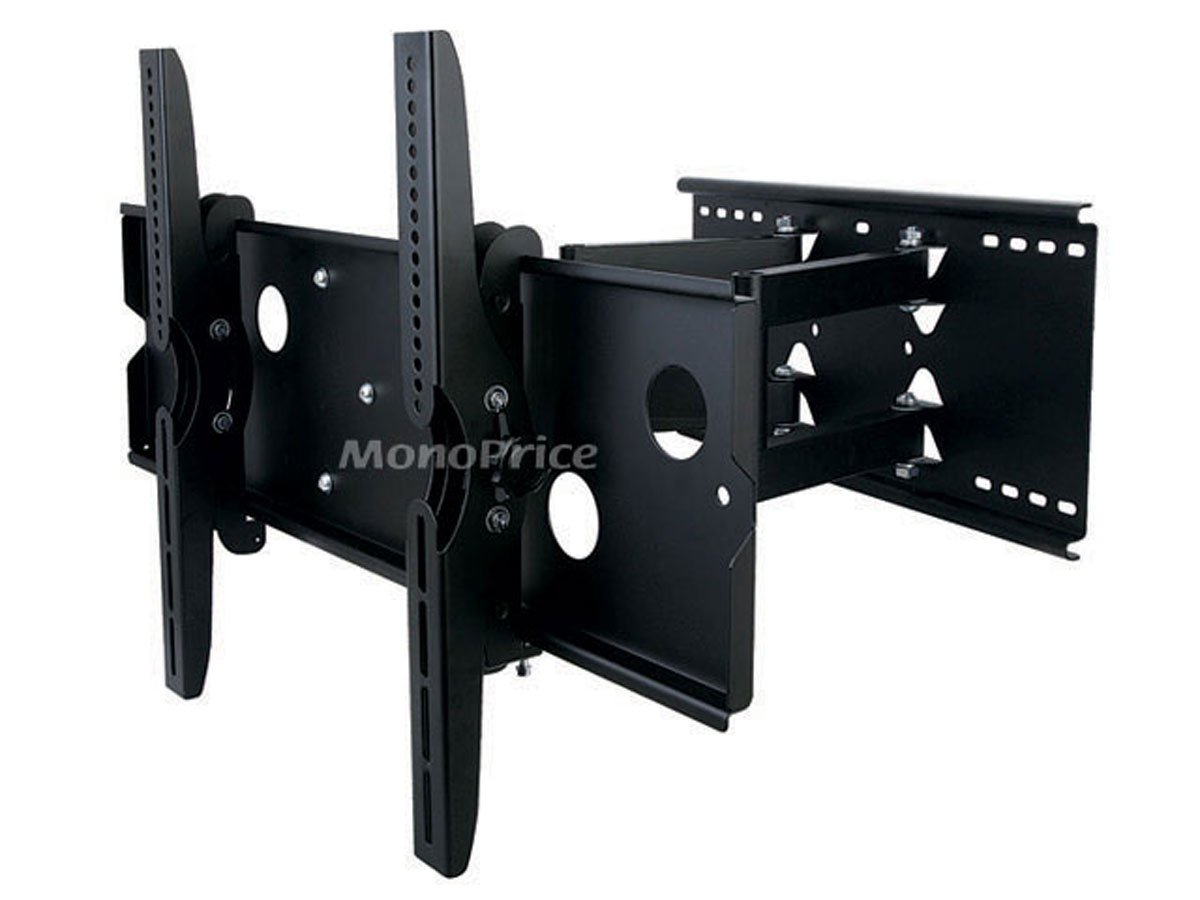
Most tilting and swiveling mounts, when fully retracted, will cause the display to sit farther away from the wall than a tilting or low profile mount. Once mounted, the viewing angle can be adjusted by tilting the display forward and the display can be pulled away from the wall on an extension arm that allows the display to swivel left to right. When extended away from the wall cables are easier to connect to the display and there is ample room behind the display to clean. Monoprice offers several variations of tilting and swiveling mounts that feature different length extension arms that accommodate different amounts of swiveling ability. Tilting and swiveling mounts are good for applications where there are several different viewing positions in a single room or the display needs to be extended and swiveled into a corner.
Example: Product ID 8588 is a mount that offers up to 15 degrees forward tilt, a 20" extension arm, swivels up to 60 degrees left or right, the maximum weight capacity is 175lbs, and when fully retracted will cause the display to sit 5" away from the wall. Go to product
• Ultra Slim
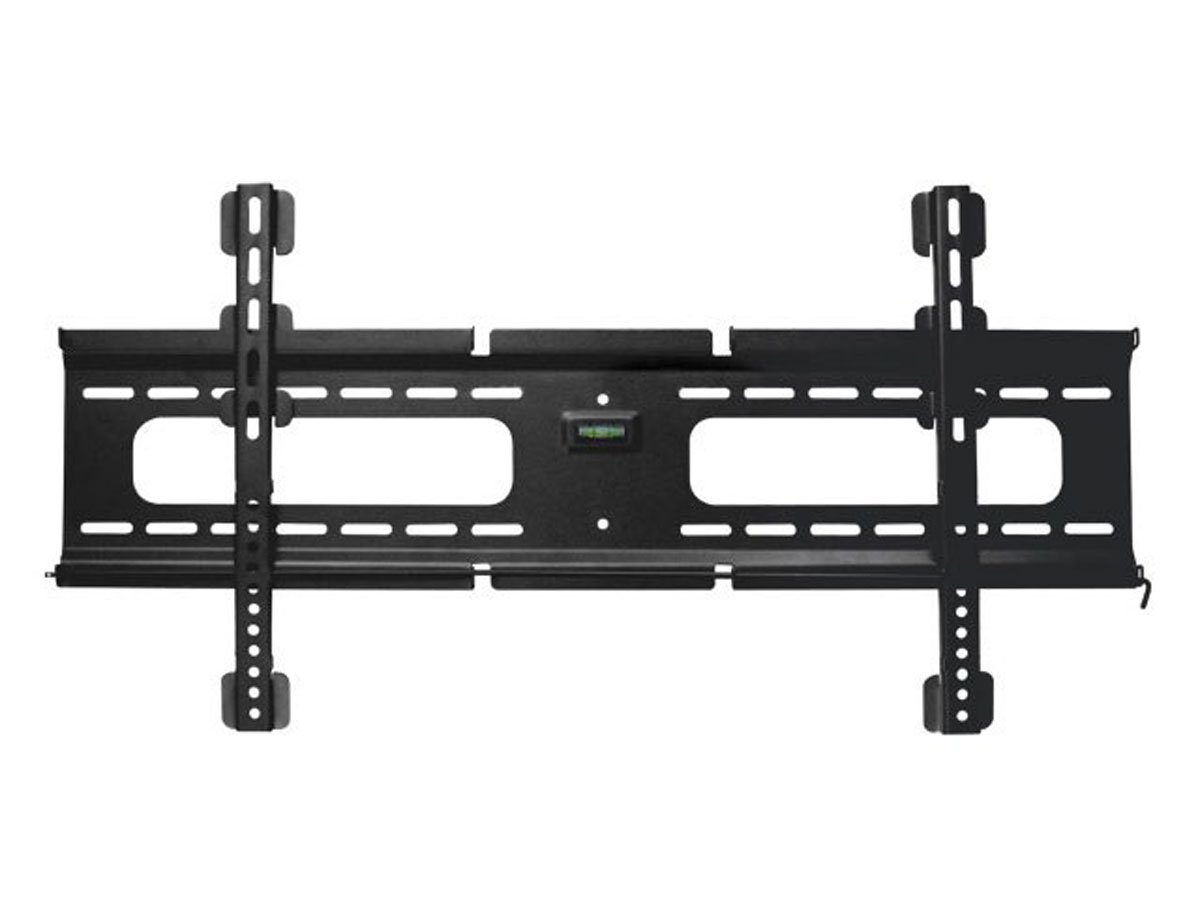
Ultra-slim mounts come in both low profile (fixed) and tilting models. Ultra-slim mounts cause the TV to sit closer to the wall than all other types and are ideal for customers who want the slimmest mounting solution available.
Note: Certain Panasonic plasma televisions and other displays from various manufacturers have a protrusion (bump) on the back of the display that will prevent the display from seating properly when using an ultra-slim mount. When choosing an ultra-slim mount, please ensure that the back of your display is flat and does not have any protrusions that will prevent it from seating properly on the mount.
Example: Product ID 5916 is tilting mount that offers up to 10 degrees forward tilt, supports VESA mounting patterns up to 800x400, has a maximum weight capacity of 165lbs, and when mounted the display will sit 1.8" away from the wall (when parallel to the wall). Go to product
Example: Product ID 5918 is a low profile fixed mount which supports VESA mounting patterns up to 800x400, has a maximum weight capacity of 165lbs, and when mounted the display will sit 3/4" away from the wall. Go to product
• LED Mounts
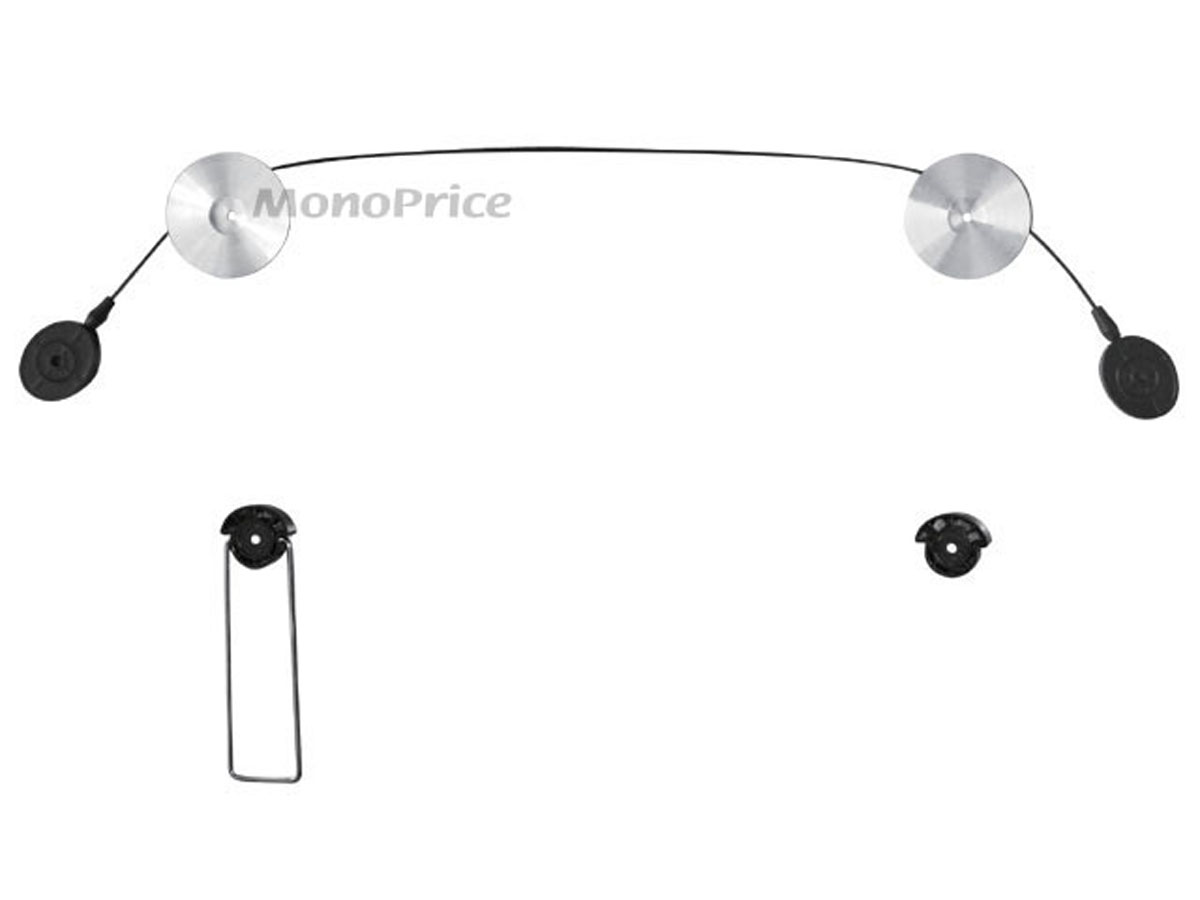
LED televisions can be mounted using most of our standard low profile, tilting, tilting and swiveling, or ultra-slim mounts. However, LED televisions are much slimmer and lighter than standard LCD or plasma displays and can be mounted using special types of mounts specifically designed for use only with LED displays. LED mounts are among the slimmest mounting solutions available and offer users the ability to mount their displays extremely close to the wall, but do not offer any tilting or swiveling features. Most LED televisions have a VESA 400x400 mounting pattern and are compatible with mounts labeled for use with LED displays, but we still recommend confirming your mounting pattern just to be sure.
Example: Product ID is an LED mount which supports a VESA 400x400 mounting pattern only, has a maximum weight capacity of 110lbs, and when mounted the display will sit 14.5mm (approx. 1/2") away from the wall. Go to product
![]() Stud spacing, hardware, and installation considerations
Stud spacing, hardware, and installation considerations
The third steps in selecting the correct mount are to determine the stud spacing inside of your walls, evaluate the mounting surface, and ensure that the mount includes the proper hardware for your installation requirements. Our tilting and swiveling mounts feature slimmer back plates (up to 20" wide) which are only compatible with 16" on center stud spacing. If your stud spacing is farther than 16" on center, the only solutions we have available are low profile or tilting mounts which feature back plates approximately 32" wide. Our mounts include a hardware pack that can be used to install the mount onto wooden studs, concrete, or solid block. If your mounting surface is different, we recommend contacting a professional installer for assistance with the installation.
![]() Low voltage and AC power cabling considerations
Low voltage and AC power cabling considerations
The final step in selecting the proper mounting solution is to determine what type of cabling or connectors would be best suited for your application. If you're going to be installing a low profile or ultra-slim mount, cable connections could prove to be difficult. We recommend using "HDMI port savers" to reduce the amount of port strain caused by thick or cramped cabling. Monoprice also offers a recessed pro power kit that will allow for installation of an AC outlet near your wall mounted display to reduce the amount of cabling running up or through the wall to your display. Another option is to install a low voltage cable pass through wall plate behind the display so that cables can be passed through the wall to exit near the ports enabling the cables to be connected without excessive bending or crimping.
Note: It is a safety hazard as well as a violation of fire and building codes (in most areas) to install standard AC power cabling inside of a wall. When running power cabling inside of a wall, please make sure to use only AC power cabling rated and approved for in-wall use. When installing low voltage cabling such as HDMI or coaxial cabling inside of a wall, in order to comply with fire and building codes please ensure that the cable jacket is CL2 rated for in-wall installation.
Example: If you choose to install an ultra-slim mount with very little clearance at the back of the display for cable connections, we recommend using flexible extension port savers (product ID 2891) to reduce the strain on the HDMI ports at the back of your display. If you're looking to install an AC outlet near your display, product ID 4652 is a recessed pro power kit that includes a single AC power outlet and a cable pass through hole for feeding cables through to exit the wall directly behind your display making them easier to connect without bending or crimping.


